Purchase Albrecht Fuchs Portraits via Collecteurs Originals
For more than three decades, German photographer Albrecht Fuchs has built a career out of shooting portraits of artists, inspired by his love of the art world. He famously shuns the studio in favor of photographing his subjects in various habitats—sometimes their own homes, sometimes places as nondescript as a hotel room or city street—lending his images a more natural and spontaneous feel. This approach has made Fuchs a sought-after portraitist in the art world—having photographed the likes of Martin Kippenberger, John Baldessari, and Raymond Pettibon—as well as beyond the art world, even visiting the late Ennio Morricone at home for a session.
Living and working in Cologne, Fuchs has presented his works both in his native Germany and internationally, with past shows at The Kölnischer Kunstverein in Cologne, Museum für Photographie Braunschweig, Galerie Nagel Draxler in Cologne and Berlin, C/O Berlin, Museum Ludwig in Cologne, Contemporary Fine Arts (CFA) Berlin, and Galerie Elisabeth & Klaus Thoman in Vienna.
Collecteurs sat down with Albrecht Fuchs for a rare interview about his early influences, artistic approach, and the highlights of a long-spanning career that’s seen him revisit some of his subjects years later.
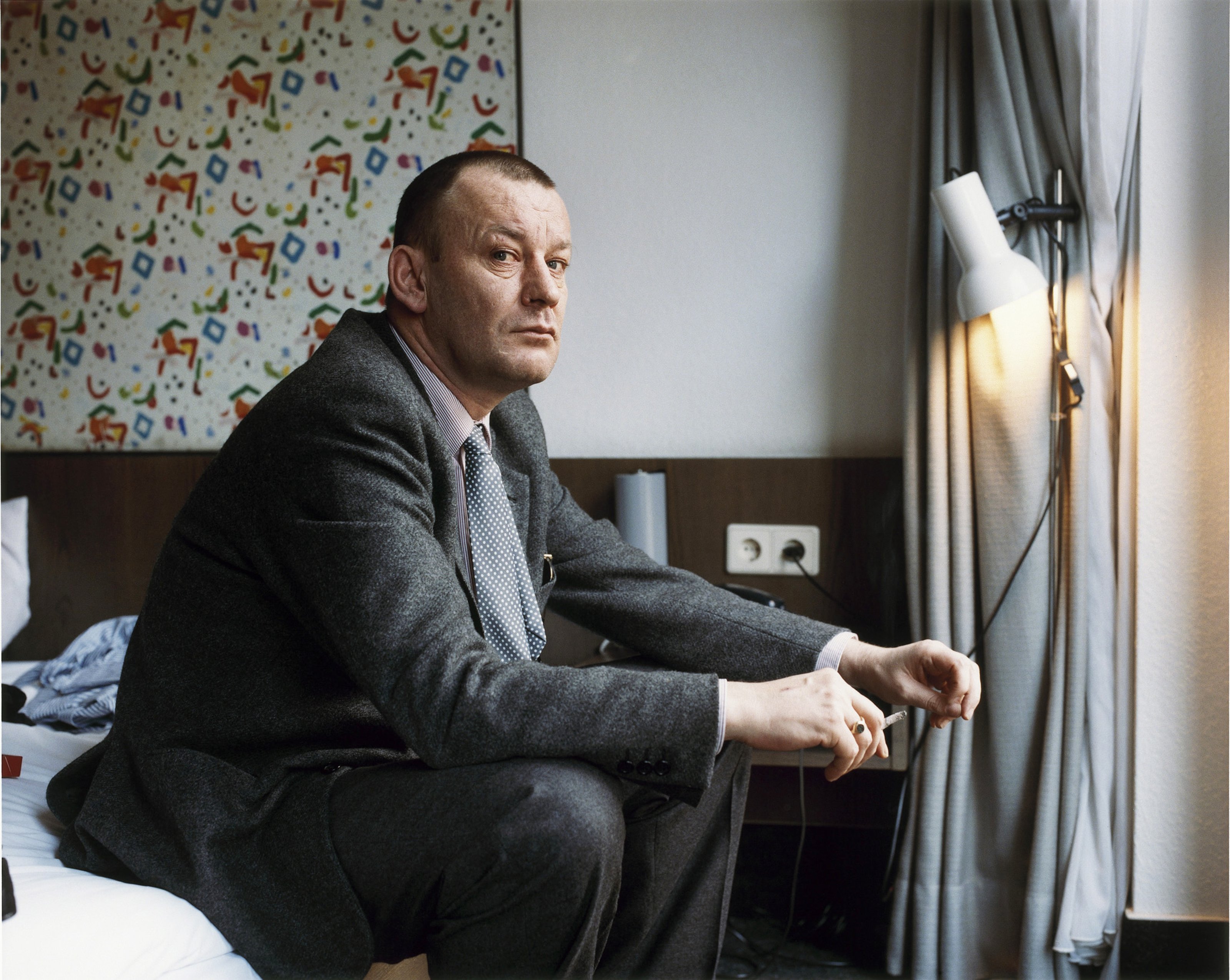
Martin Kippenberger in Cologne, 1995
Collecteurs: The Danish-German journalist Johanna Adorján has previously said about your works, “A tense calm radiates from all of the pictures, a strange intensity and concentration, as if the people in them were thinking in that very moment of the secret that makes them who they are.”
What is it that you think about when capturing an image? What do you look for? In other words, what makes a portrait an Albrecht Fuchs portrait?
Albrecht Fuchs: I try to keep the technical part as simple as possible. Color is significant; I work with natural light and I nearly exclusively use a tripod to keep the focus on the portrayed person. For me, the relation of a portrayed person to his or her environment is important. And a balance between closeness and distance. But this is just some basic information. The essence of a portrait is that it is the result of an encounter of two personalities with potentially different expectations.

Ed Ruscha in Los Angeles, 2006
I am not able to nail down what specifically it is that makes a portrait an “Albrecht Fuchs Portrait,” to use your phrase, but since it is always two human beings that define a portrait, a portrait I do certainly has to do with my specific personality and the way I interact with the person in front of my camera. There is a lot of intuition involved; things work kind of semi-automatically. During the portrait session, usually, there is a conversation going on, that in moments may serve as a distraction from the peculiar situation that a portrait shooting doubtlessly is.
I certainly see that there is a connecting aura, a special expression in the faces in my portraits. How that happens, I cannot tell. That is probably the great thing about any good (portrait) photography—that it is always the person behind the camera who defines the outcome, not the technical setup.
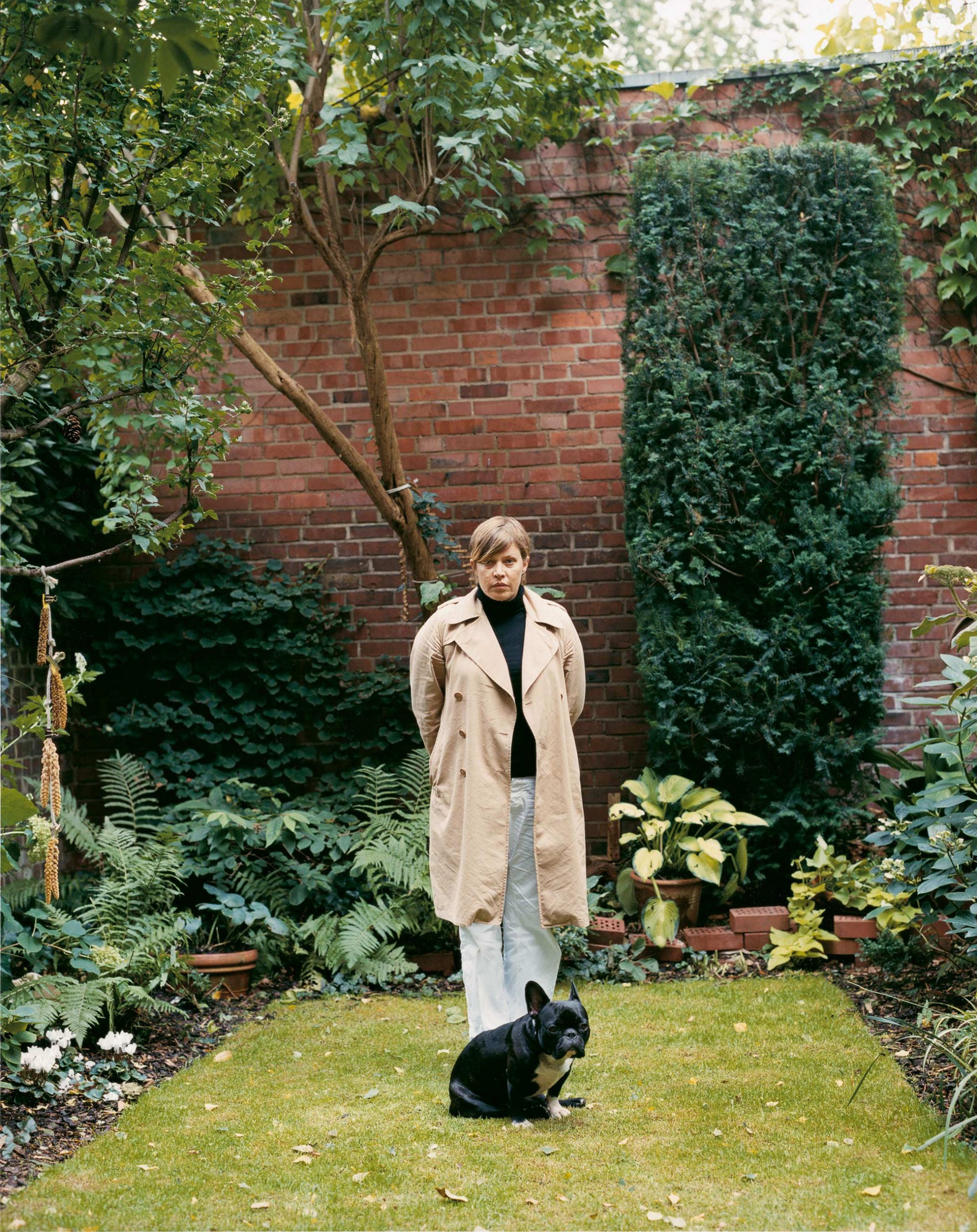
Cosima von Bonin in Cologne, 2004
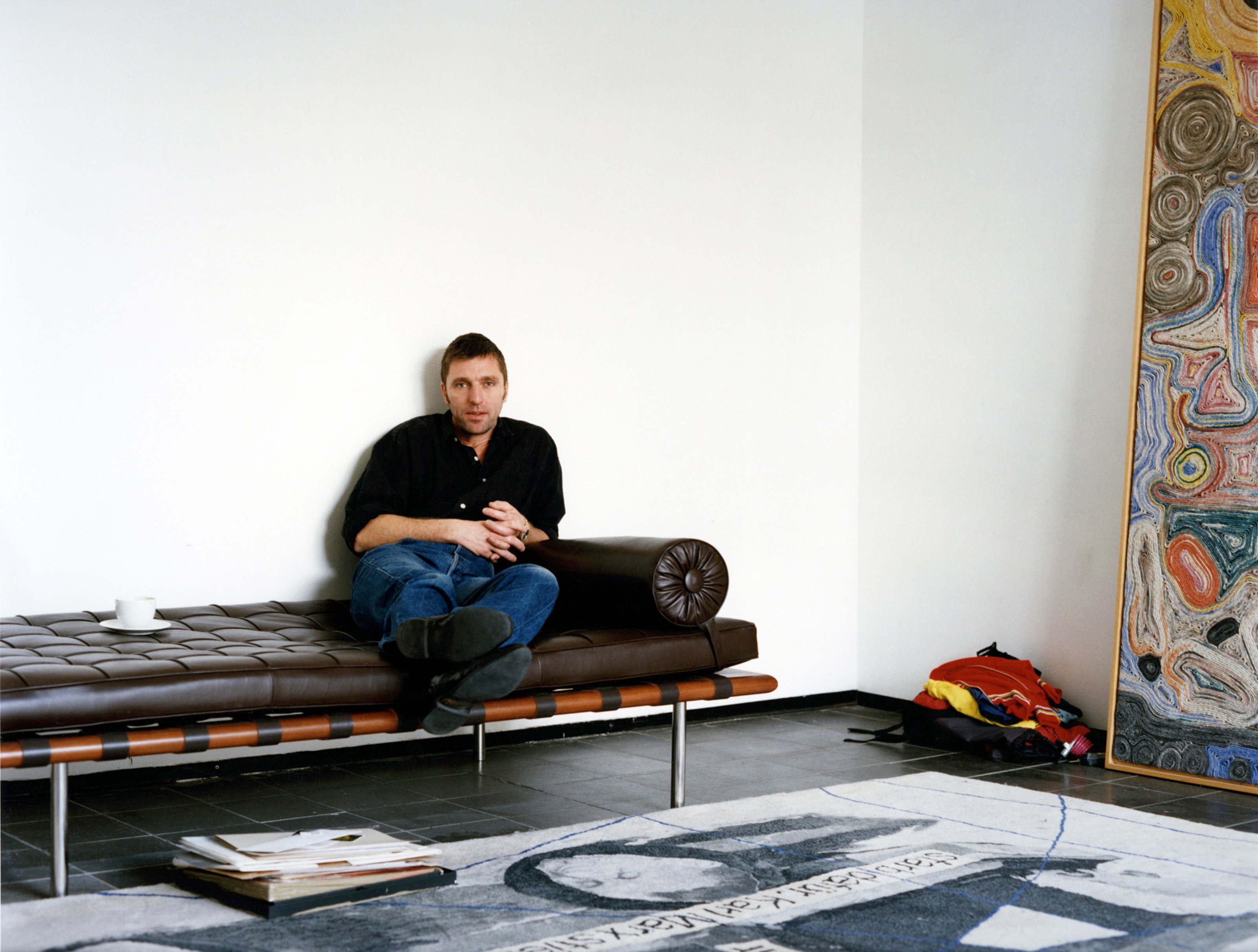
Collecteurs: Throughout your career, you’ve photographed many artists, from Isa Genzken and John Baldessari to Ed Ruscha and Raymond Pettibon… In a way, you could be called “the photographer who collects artists.” How does that description make you feel?
AF: Well, one certainly could say, that I am a kind of collector of artists. Though I do not have the genes of a collector. It certainly would be great, to be a collector not of the portraits of artists, but as well as their art.
Collecteurs: While we’re on the subject of collecting, do you collect artworks (and if so, what kind)? Do you trade them (with friends, colleagues, etc.)?
AF: Yes, from time to I do trade with friends and colleagues like Johannes Wohnseifer, Mark Gonzales, Wolfgang Tillmans, Gregor Schneider, Margarete Jakschik and Roe Ethridge, Andy Hope 1930 and Gregor Schneider. Not mainly photography—drawings, collages, and, to a small extent, paintings, as well.
Collecteurs: What role do you think the collector plays in the lifespan of a work of art?
AF: A pretty big one for some artists, I suppose. Speaking for myself, (unfortunately?) the influence so far is rather small.
image left: Albert Oehlen in Cologne, 1996
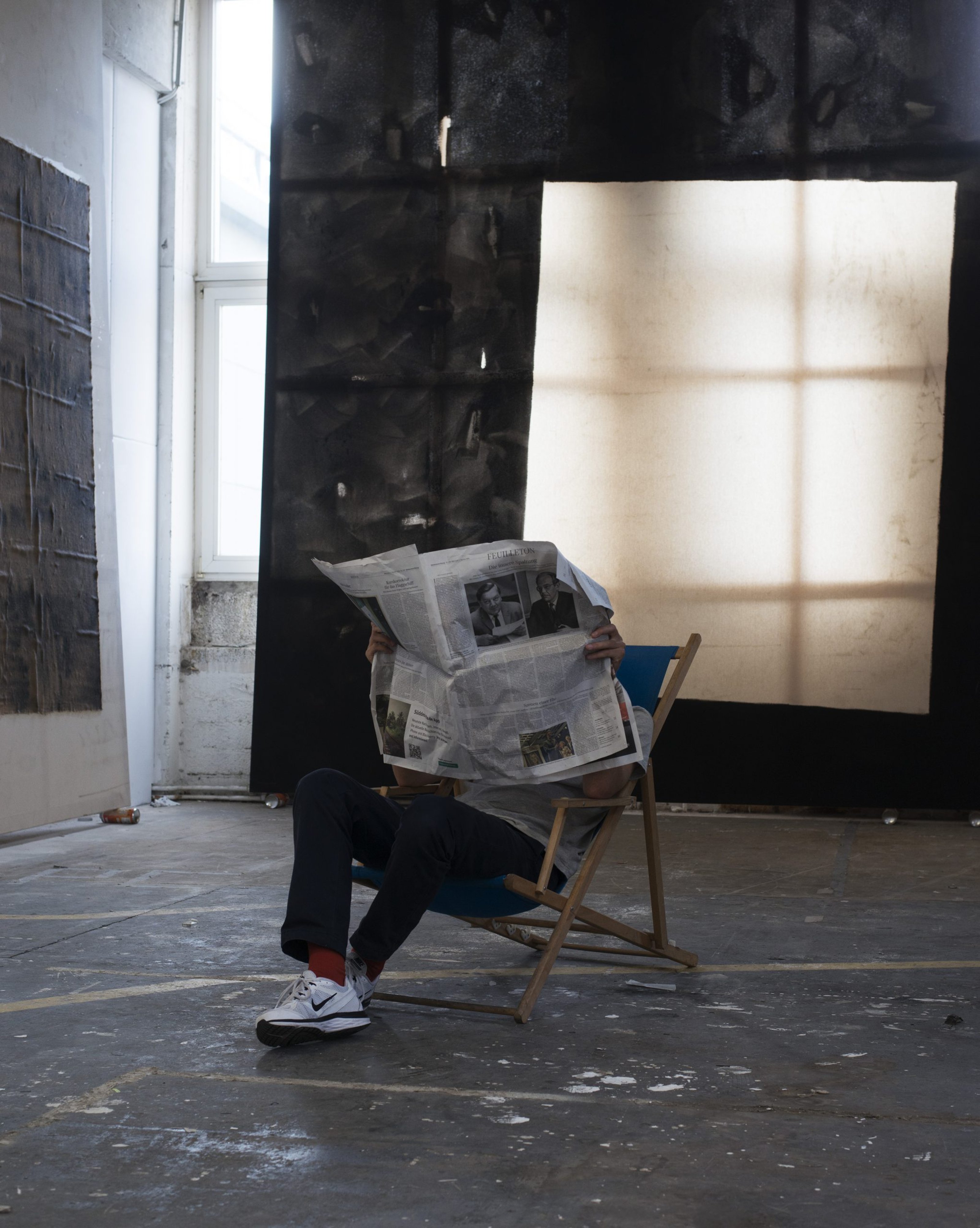
David Ostrowski in Cologne, 2014
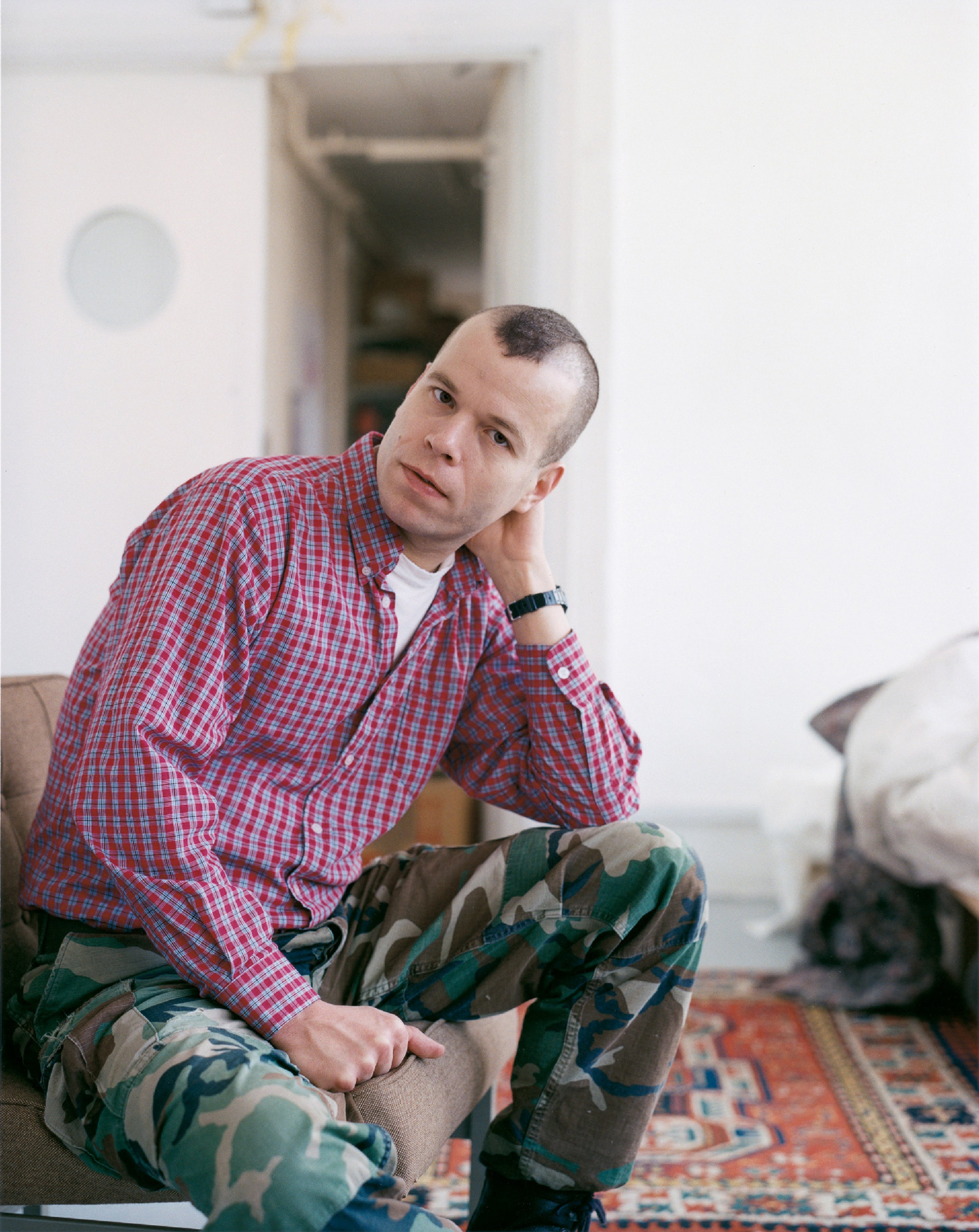
Collecteurs: If the COVID-19 pandemic hadn’t happened, you were scheduled to be in Basel as an Artist-in-Residence for 2020/2021 at Simonett & Baer. Could you tell us more about that project?
AF: In early 2020, Simonett & Baer invited me to Basel for a couple of visits to realize a series of portraits. A book with the final series was supposed to be published during the Art Basel. This plan became pretty soon obsolete because of COVID-19 and the resulting travel restrictions. Last September, I finally went to Basel for some days and started with a number of portraits of people who do not predominantly belong to the art world. The next trip hopefully is going to happen in April or May 2021.
image left: Wolfgang Tillmans in London, 2001
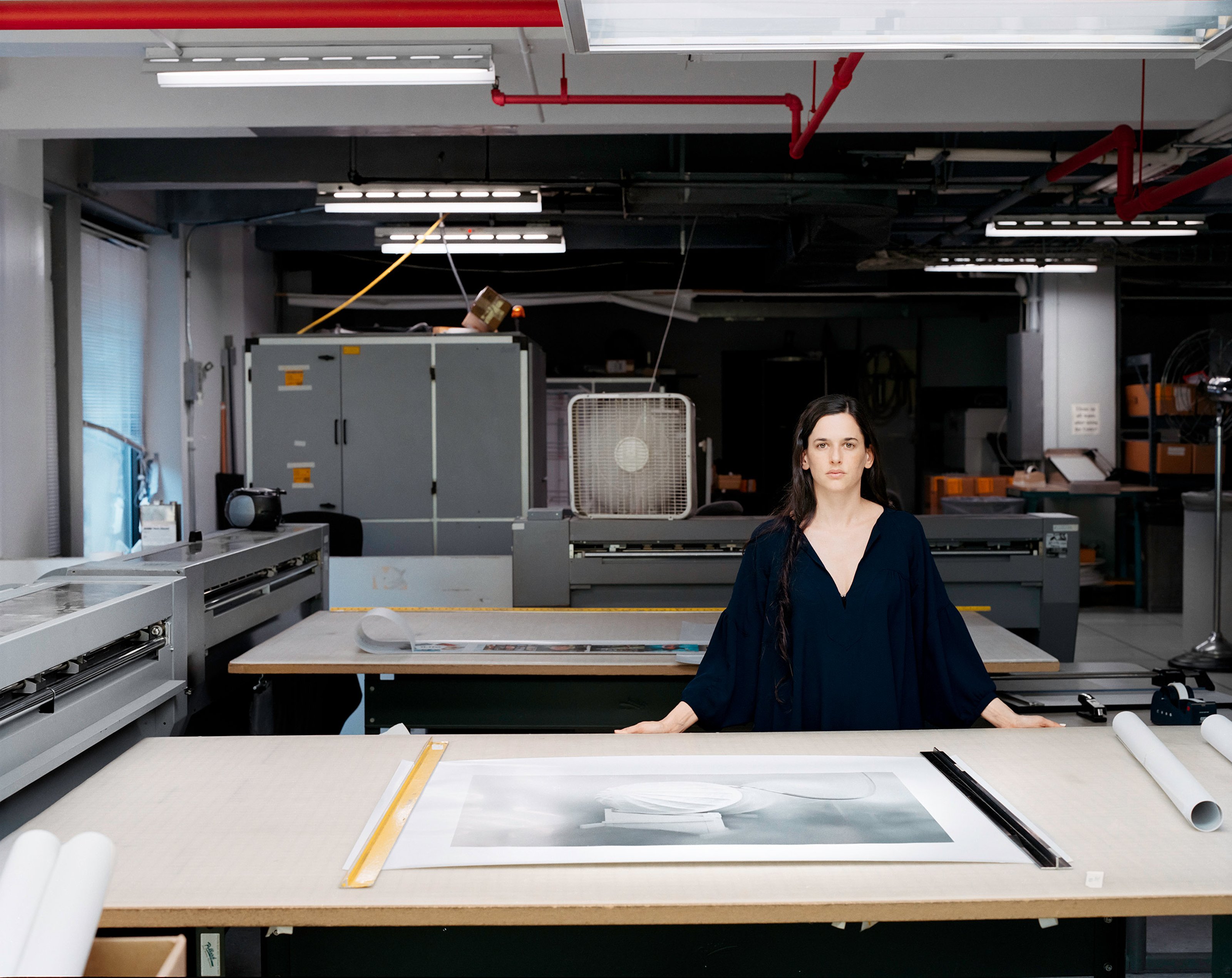
Taryn Simon in New York, 2007
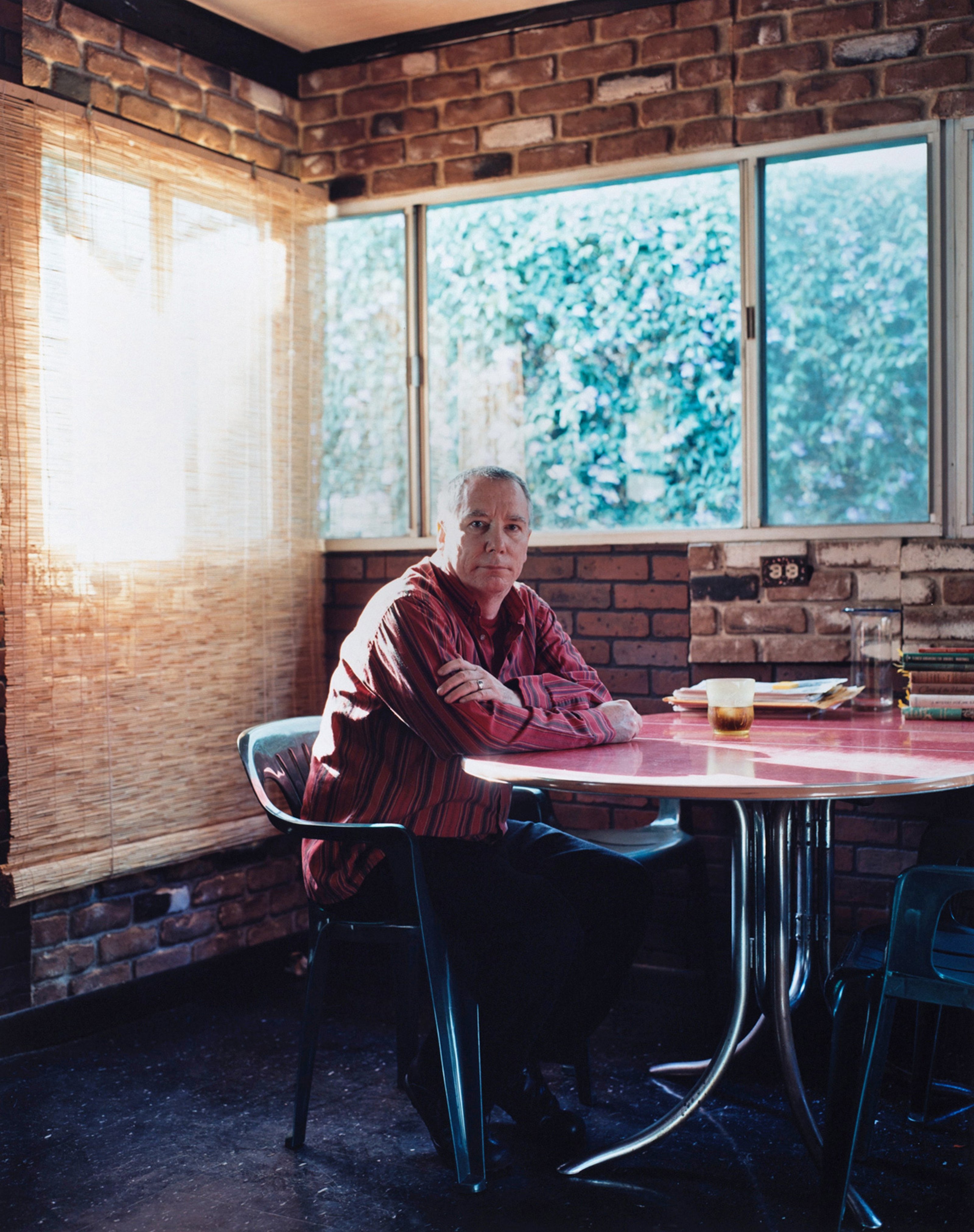
Collecteurs: You also had two books published recently: one by Simonett & Baer in September, called Fifty-Three Portraits and a Haystack, which features 54 images from your archive chosen by Dino Simonett, and the other by Walther König, titled Album – Portraits 1989 – 2020, to commemorate your exhibition at the Museum für Photographie Braunschweig. What was the process of putting together those two books like?
AF: Fifty-three Portraits and a Haystack, a pretty small but beautiful little book, actually came into existence after the portrait project in Basel had become impossible last spring. It was basically put together one night during lockdown by Dino Simonett in his house in the Swiss Alps. Editing happened by looking through my homepage and Instagram account. So, I really was not involved in the editing process. The book is a selection of Dino’s favorite portraits of mine from 1989 until 2019. “A small retrospective from three decades, amuse-bouche for the Basel Project,” as it is labeled by him.
Coincidentally, I was busy planning my show and the book Album – Portraits 1989 – 2020 with a selection of portraits from the same period of time. The process of Album is very different, because it had already started in 2019, when the curator (and editor of the book) Barbara Hofmann-Johnson invited me to do the show in Braunschweig*. The selection of the images is the result of a dialogue between her and me and focuses on portraits of artists and people from the art world. But the final selection was made by me. In contrast to earlier books of mine, it contains installation shots, tear sheets from magazines, and details from my studio and contact sheets, as well.
*There are two further stations: The first at Kunsthaus Nürnberg from January 16 to April 5, 2021, which may not be open to the public due to the pandemic, and the second one at Leopold Hoesch Museum in Düren, a city close to Cologne, from August 29 to November 21, 2021.
image left: Mike Kelley in Los Angeles, 2004
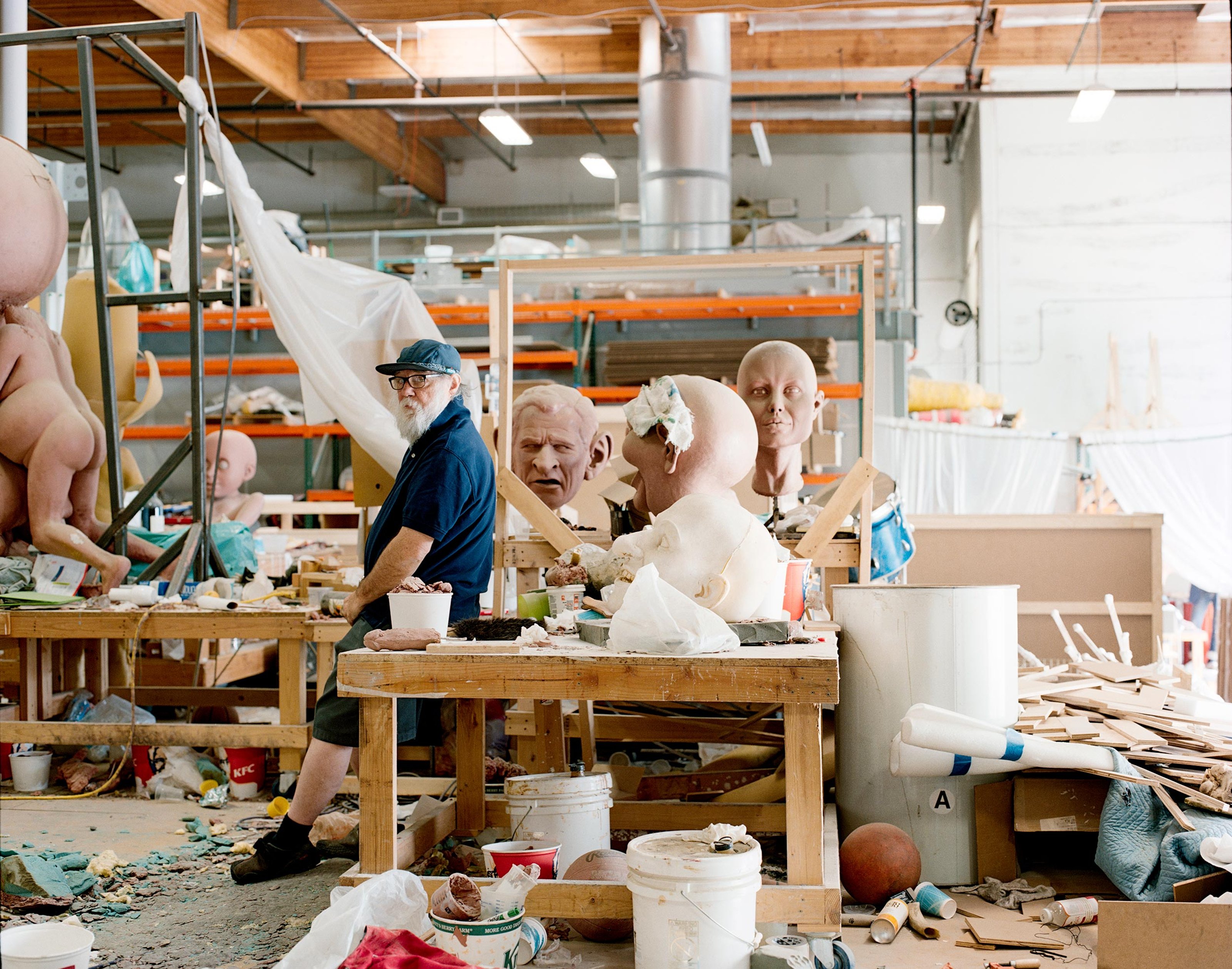
Paul McCarthy in Los Angeles, 2007
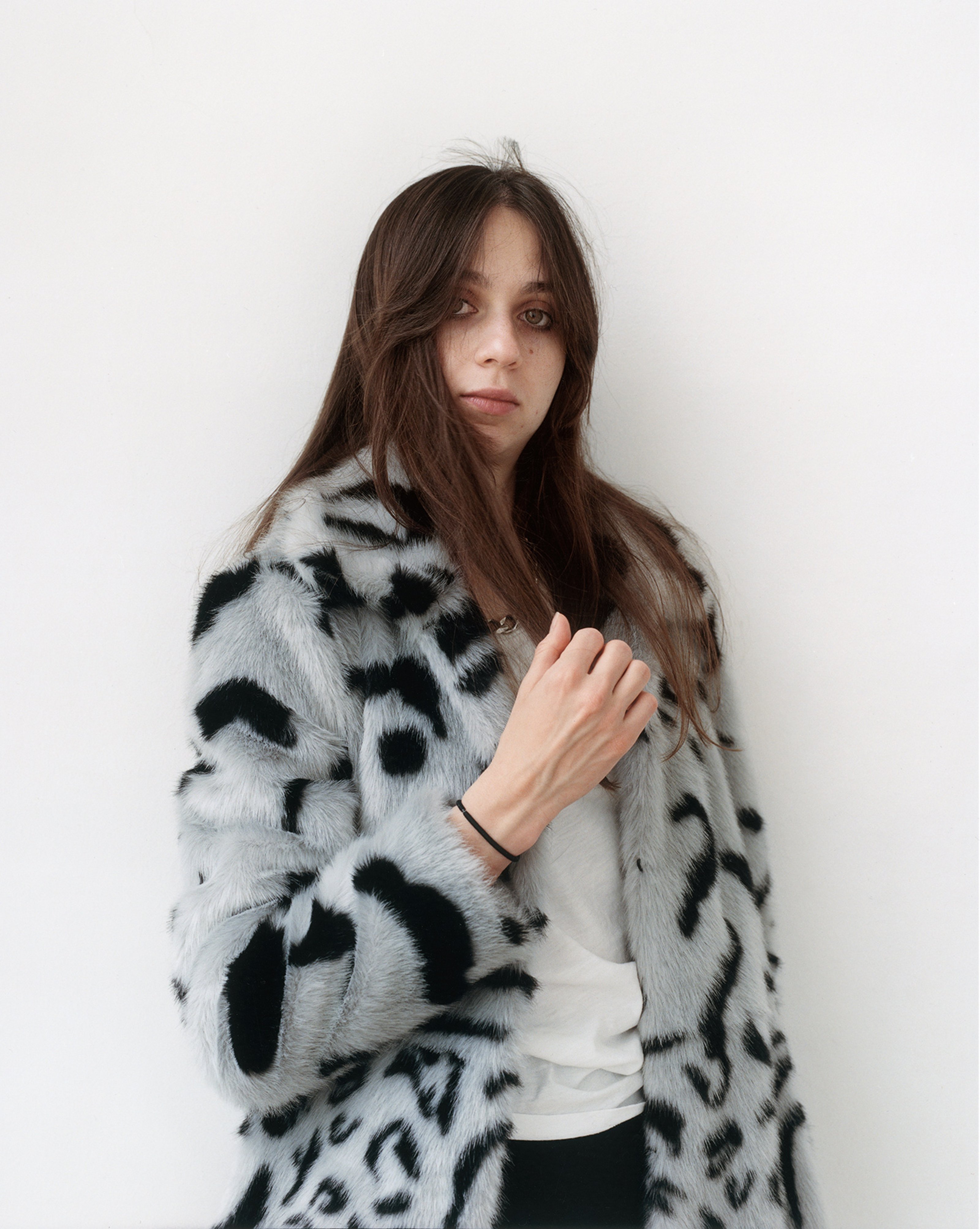
Collecteurs: You’ve presented the show “Portraits” before, which focused on fellow artists. Where do see yourself amongst the long line of portrait photographers throughout history?
AF: Well, I think it is probably not my place to define my position in the world of portrait photography. But, there are certainly a lot of influences. In 1989, I got to know the photographer Evelyn Hofer and her work through a friend while I spent most of the year in New York, kind of taking a break from my studies. Her portraits of artists like Saul Steinberg and Balthus, as well as her classical composed portraits shot in New York and Dublin in the 1960s, had a strong impact on me and were the motivation for me to begin my portrait work.
August Sander, of course, “looms large on the horizon,” to quote myself from an interview in my book, Album. The portraits of Diane Arbus, Peter Hujar, and Robert Mapplethorpe were certainly influential, as well as John Deakin with his portraits of the 1950s and 1960s art scene.
Unlike the portraits of these photographers, for me, color is an essential element of my work. I love the work of Larry Clark, William Eggleston, Jeff Wall, and Cindy Sherman, who predominantly work with portrait photography, and I am a fan of Wolfgang Tillmans’s unique approach to photography.
image left: Avery Singer in Cologne, 2017
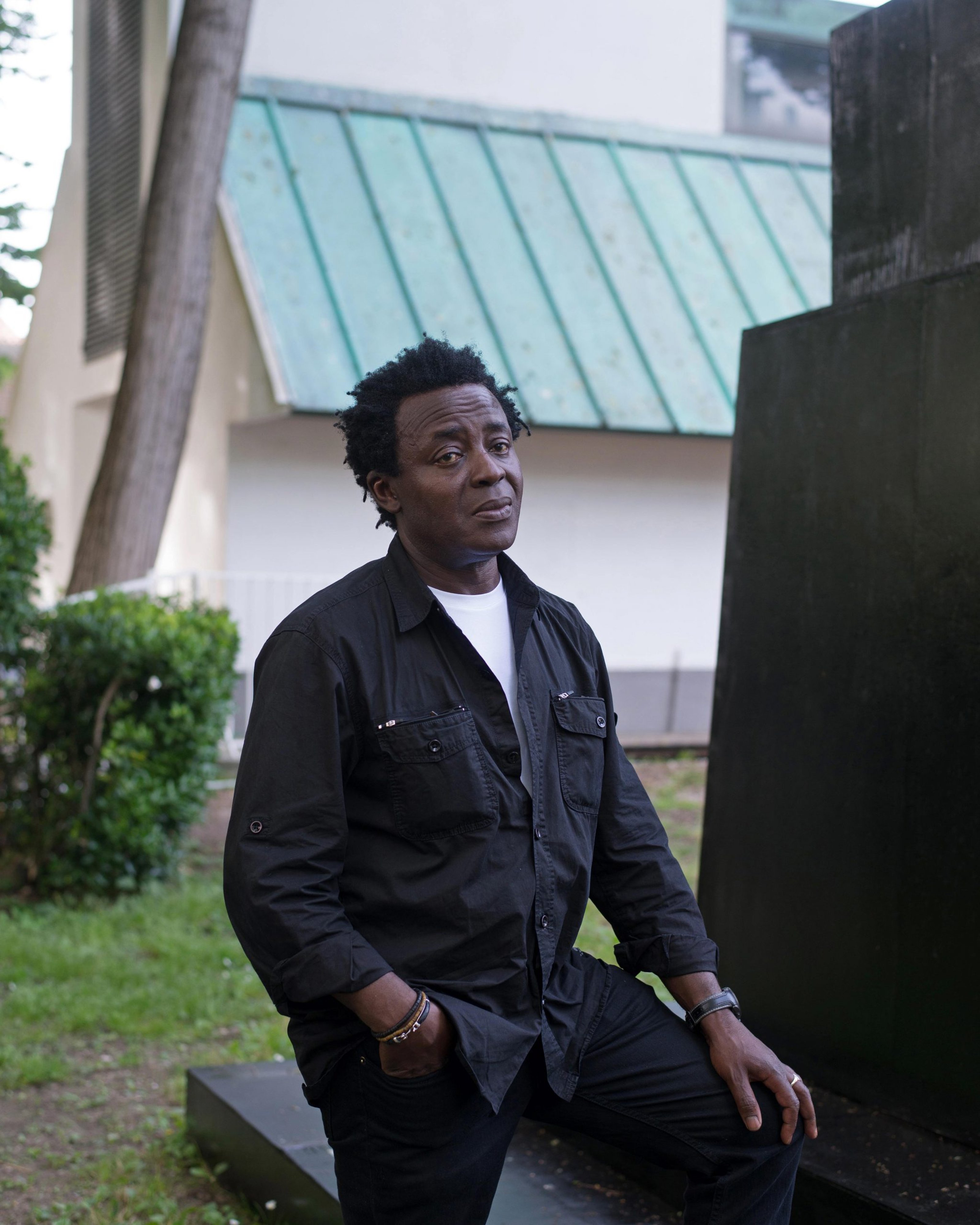
John Akomfrah in Venice, 2015
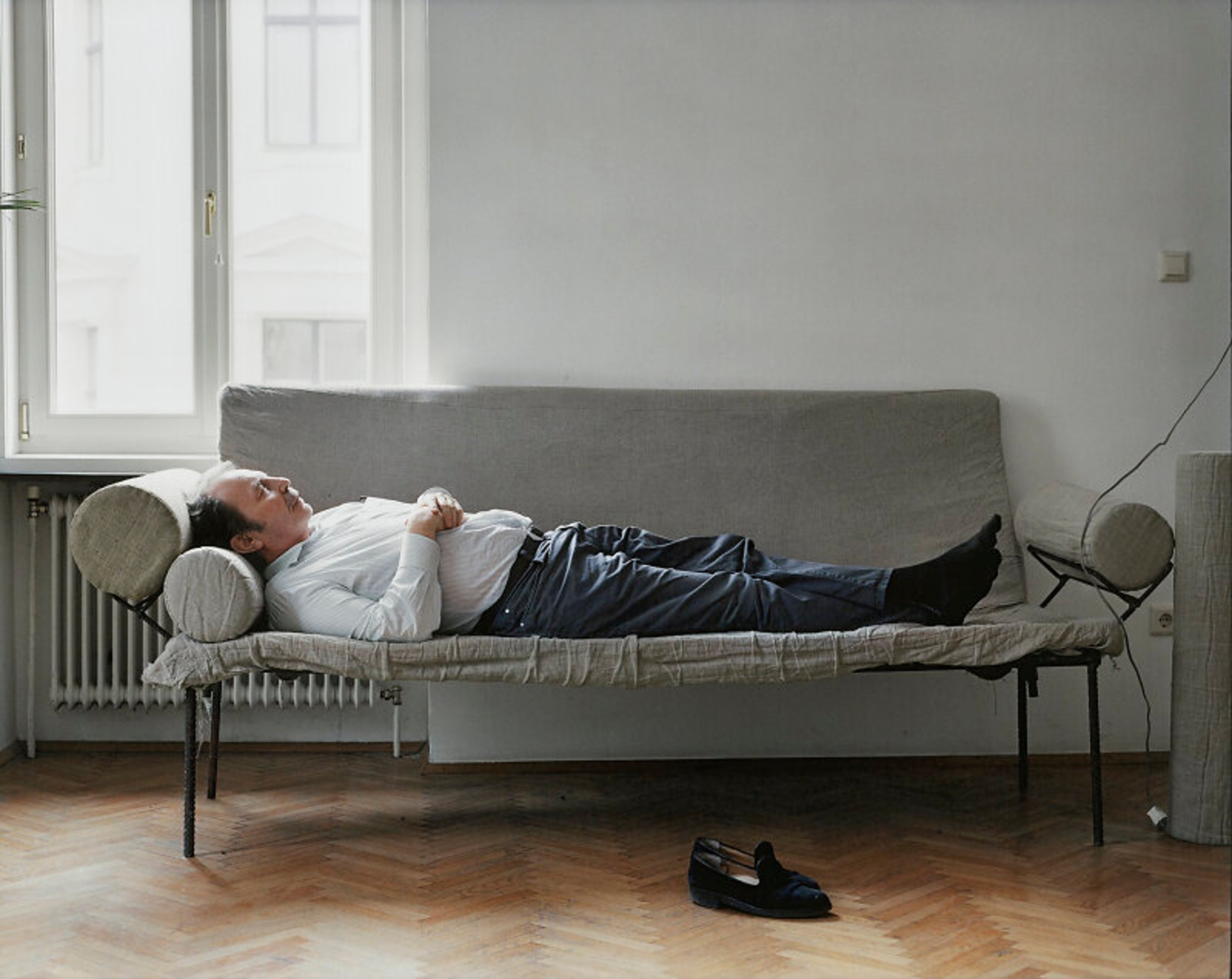
Franz West in Vienna, 2003
Collecteurs: Lastly, can you share a memorable anecdote from your career with us?
AF: Sure, there are certainly some. Frustrating for me at the time but yet funny, for instance, was a photoshoot in late 1997 with Franz West, who was known for his Viennese crankiness, that abruptly ended just a minute after it started with his accusation of “You photographers drove Lady Di into her death, I want to stop the shooting now”—probably because he just had a bad day. Some years later, in 2003, I had another appointment with Franz West. This time he did not mention Lady Di, and he did not remember our first encounter at all. Luckily, the portraits turned out very well.
There was also Mike Kelley, who posed in his colorful garden with a poison green jacket and straw hat—he wanted to give me some color because “there is a lack of color in German photography.”
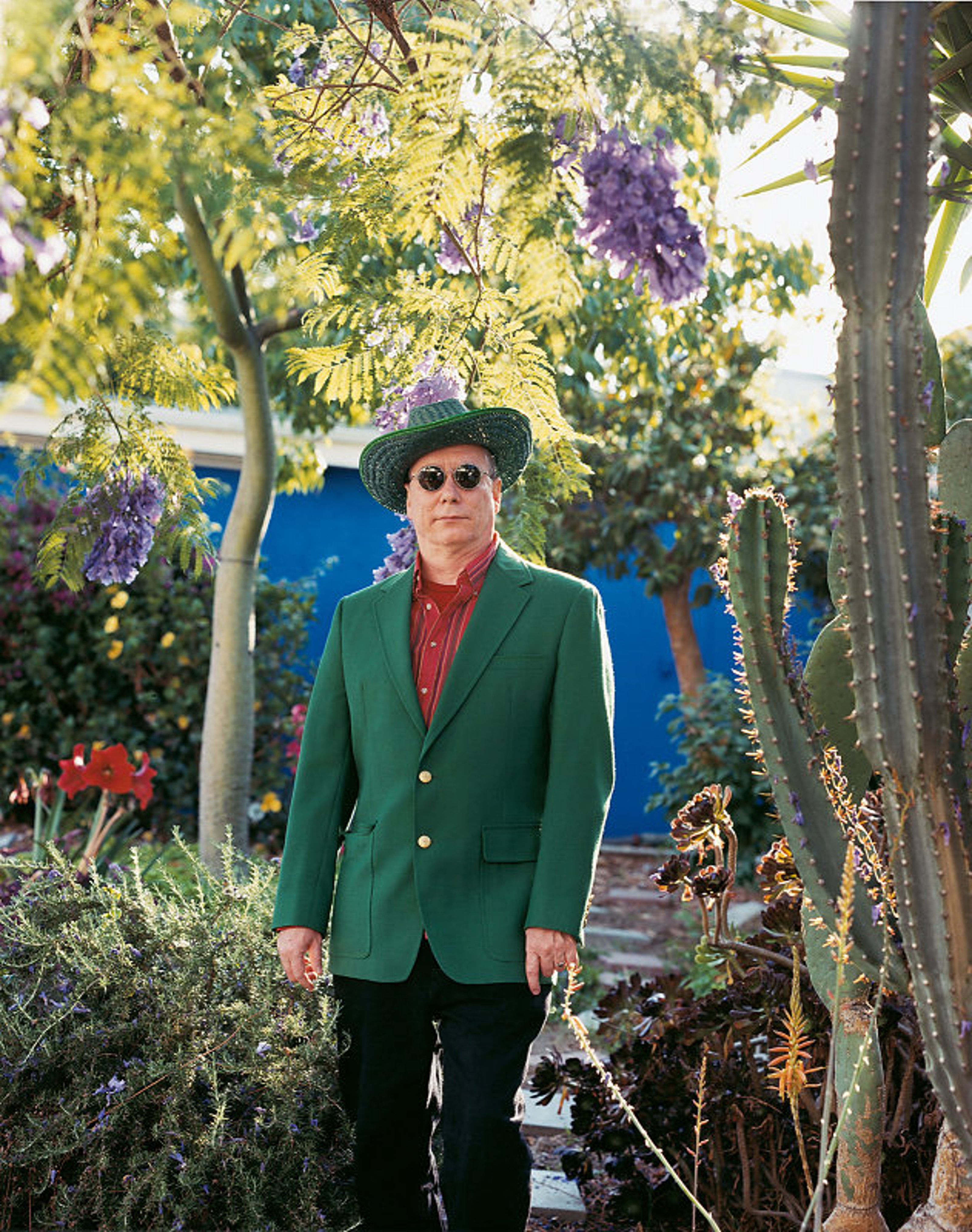
Mike Kelley in Los Angeles, 2004
End.